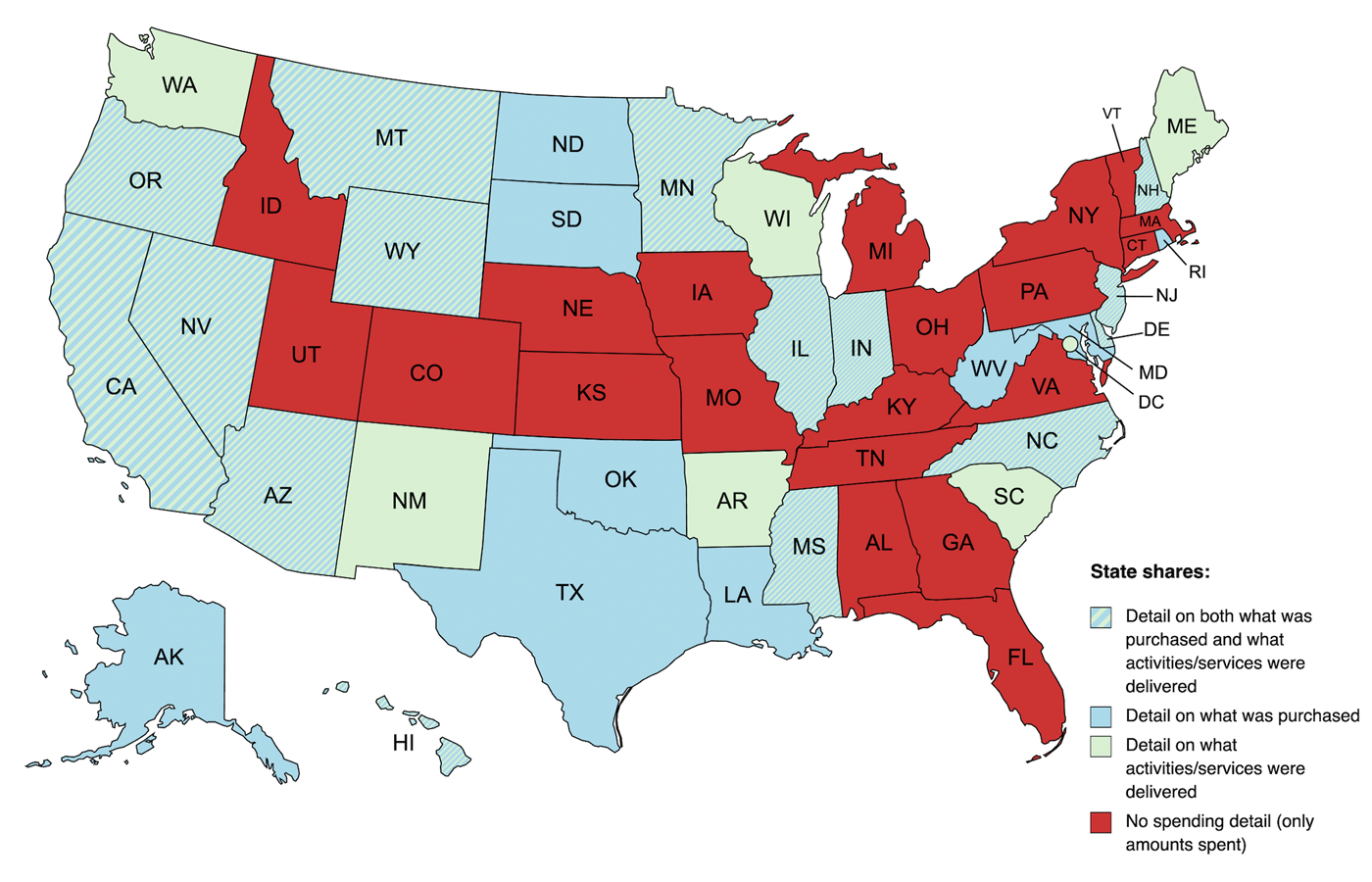Ever Wondered How Seattle Schools Spent their ESSER Dollars?
This article from Education next got me asking that question.

As you can see from the map, Washington State is one of the few states to actually provide detail to the feds on their spending.
An historic, massively expensive experiment is nearing its home stretch. In March 2021 the federal government sent $112 billion out to 14,000 districts with almost no strings attached. The Elementary and Secondary School Emergency Relief, or ESSER, funding came on top of another $60 billion from two earlier waves of pandemic relief dollars for schools (in sum, roughly three times the annual federal investment). Never before had schools seen anything like it.
To say school districts were (and still are) flush with cash is an understatement. District leaders have more money at their disposal than ever before. Normally leaders spend budget seasons trying to pare back planned expenditures to match their revenue reality. But with ESSER, districts had to come up with new ideas for how to spend one-time funds within a limited time period. Many invited employees, parents, and communities to submit suggestions. Some initially worried they wouldn’t spend it down by the September 2024 deadline.
What did Education Next find?
- Districts are now on track to spend it all, with only a small window left to correct course.
- Many states have fallen short on tracking what districts are buying or what’s being delivered.
- Investments in social-emotional learning are more popular than expanded learning time.
- Half of relief funds are paying for labor, setting the stage for a painful fiscal cliff.
- ESSER fueled a large jump in vendor contracts, and with it a burden on districts to ensure these dollars deliver value.
- Amidst mixed messages on what ESSER was for, districts are spending steadily on facilities.
- We’re learning very little about what matters most: Are investments helping students?
- One final lesson stands out on the ESSER experiment: Each district makes its own choices.
ESSER funds are allowable to fund costs incurred on or after March 13, 2020, when COVID 19
was declared a national emergency, and all funds must be obligated by September 30, 2024.
This includes one-year carryover as allowed under the Tydings Amendment (34 CFR 76.709). These
are one-time funds that should not be committed to ongoing financial obligations.
Here's SPS' ESSER spending plan 80%:
- $ about 14M+ for IDEA (Individuals with Disabilities Act)
- $11M+ for "providing mental health services and supports, including through the implementation of evidence-based full-service community schools." This did include summer learning and afterschool programs.
- $10M+ for "addressing the academic impact of lost instructional time among an LEA's students, including low-income, student with disabilities, ELL, racial and ethnic minorities, students experiencing homelessness and children and youth in foster care."
This one has a pretty typical breakout of activities but this one stood out "Decolonizing ELA" as well as "LGBTQ and instructional supports." I'd like to know what is meant here by either one. As well, there was an "Outdoor and Community Learning Project-Program Manager." Did SPS actually try more outdoor learning?
- $11M+ - School facility repairs and improvements to enable operation of schools to reduce risk of virus transmission and exposure to environmental health hazards and to support student health needs."
- $19.5M - Other activities that are necessary to maintain the operation of and continuity of services in local education agencies and continuing to employ existing staff of the local educational agency (for example, child care and nutrition services).
- Indirect Costs - $nearly 8M
Total: $74,438, 881.
So SPS had extra dollars for all these important things and yet is STILL in the hole more than $130M?
Funds to Local Educational Agencies (LEAs) are allocated on the basis of their
respective shares of funds received under Title I, Part A of the Elementary and Secondary
Education Act of 1965 in fiscal year 2020. Therefore, districts will not receive the same
proportionate share of ESSER III-ARP funds as they did for the first round of ESSER funds
(ESSER I).
ESSER funds are allowable to fund costs incurred on or after March 13, 2020, when COVID 19
was declared a national emergency, and all funds must be obligated by September 30, 2024.
There is no maintenance of effort requirement for the ESSER III-ARP funds for LEAs. However,
there is a new “maintenance of equity” requirement for the ESSER III-ARP funds for
LEAs. The US Department of Education has provided an FAQ on this topic, see at Resources -
Office of Elementary and Secondary Education.
SPS spent this last 20% - over $16M - this way:
Page 2
To address learning loss through the implementation of evidence-based interventions, such as summer learning or summer enrichment, extended day, comprehensive afterschool programs, or extended school year programs, and ensure that such interventions respond to students’ academic, social, and emotional needs and address the disproportionate impact of the coronavirus on
the student subgroups described in section 1111(b)(2)(B)(xi) of the Elementary
and Secondary 8 Education Act of 1965 (20 U.S.C.6311(b)(2)(B)(xi)); each major racial and ethnic group, children from low-income families, children with disabilities, English learners, gender, migrant students, students experiencing homelessness, and children and youth in foster care).
Indirect Costs - nearly $2M
I have no idea what a normal ratio for indirect costs is relative to the overall spending but for each spending plan, it appears to be about 12%.
Comments